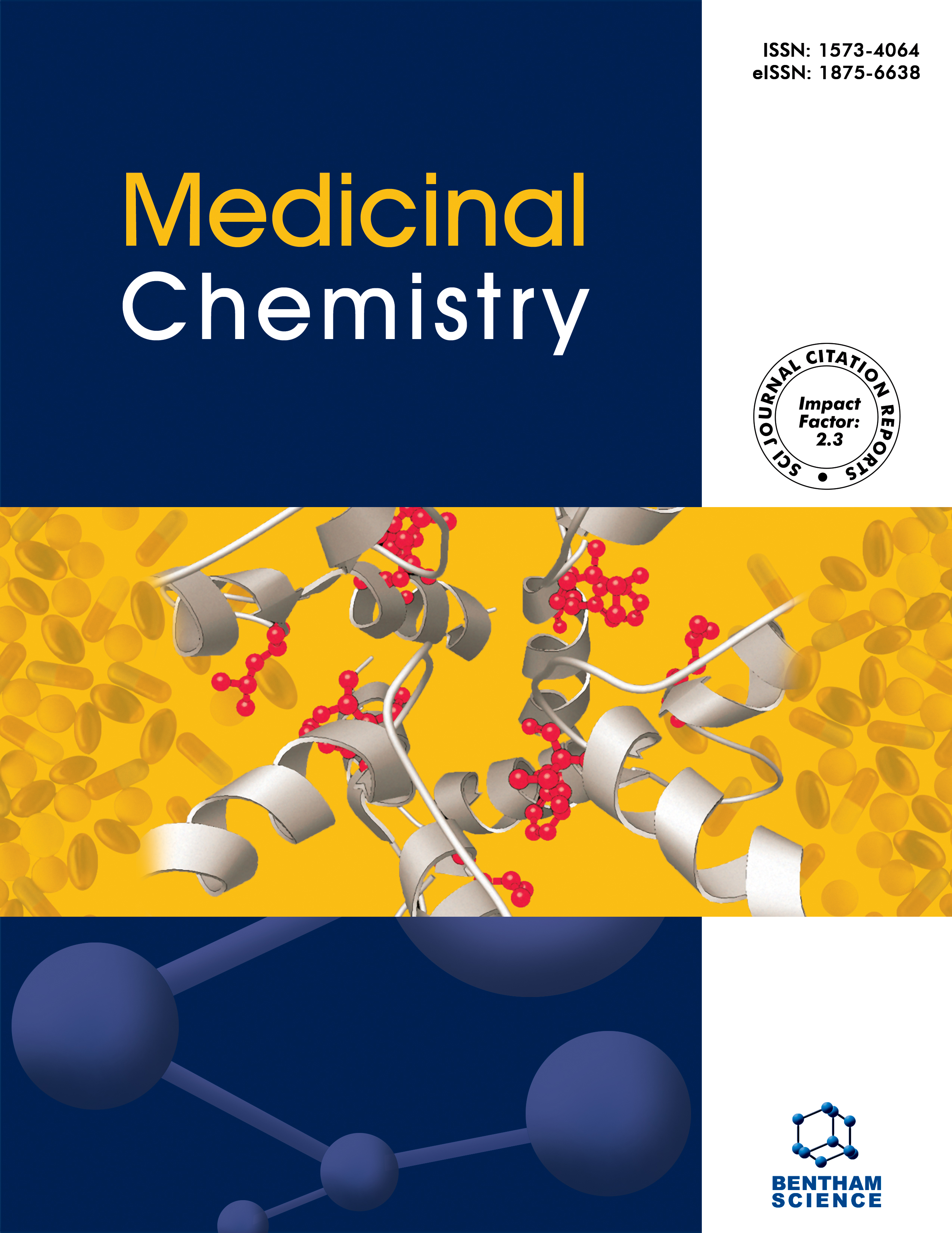- Home
- A-Z Publications
- Medicinal Chemistry
- Previous Issues
- Volume 20, Issue 8, 2024
Medicinal Chemistry - Volume 20, Issue 8, 2024
Volume 20, Issue 8, 2024
-
-
Synthetic Protocols, Structural Activity Relationship, and Biological Activity of Piperazine and its Derivatives
More LessAuthors: Md Faizan, Rajnish Kumar, Avijit Mazumder, Salahuddin, Neelima Kukreti, Arvind Kumar and M.V.N.L. ChaitanyaThe versatile basic structure of piperazine allows for the development and production of newer bioactive molecules that can be used to treat a wide range of diseases. Piperazine derivatives are unique and can easily be modified for the desired pharmacological activity. The two opposing nitrogen atoms in a six-membered piperazine ring offer a large polar surface area, relative structural rigidity, and more acceptors and d Read More
-
-
-
PPARs (Peroxisome Proliferator-activated Receptors) and Their Agonists in Alzheimer's Disease
More LessAuthors: Mohit Kumar, Anita A. Sharma, Ashok Kumar Datusalia and Gopal L. KhatikAlzheimer's disease (AD) is a neurodegenerative disease leading to dementia because of complex phathomechanisms like amyloid β (Aβ) aggregation, tau aggregates, and neurofibrillary tangles. Peroxisome proliferator-activated receptor (PPAR) agonists have been reported recently with neuroprotective and anti-inflammatory properties. PPARs belong to the superfamily of nuclear hormone receptors and function as li Read More
-
-
-
Pyrazole Paradigms: Unveiling Synthetic Pathways and Unraveling Anti-Cancer Potential
More LessAuthors: Poonam Kumari, Neetu Agrawal and Somdutt MujwarThis review investigates the synthetic methods and anti-cancer activities of pyrazole compounds. Various synthetic approaches, including traditional organic synthesis and microwaveassisted synthesis, have been used to change the pyrazole core structure, resulting in new compounds with improved pharmacological properties. The paper also covers the mechanisms of action that underpin pyrazole derivatives' anti-cancer c Read More
-
-
-
Synthesis, Molecular Docking Studies and Biological Evaluation of Thiazolyl Hydrazone Derivatives of Chromone-3-carbaldehyde as Potent Anti-Oxidant and Anti-Inflammatory Agents
More LessAuthors: Rakhi Gawali, Raghunath Bhosale, Rohit Bavi, Shravan Jadhav and Nargisbano PeerzadeIntroduction: A series of 15 thiazolyl hydrazone derivatives of chromone-3- carbaldehyde have been designed and synthesized by the cyclization of thiosemicarbazone derivatives of chromone-3-carbaldehydes with 4'-substituted-2-bromo acetophenones. Methods: All these derivatives were evaluated for antioxidant activity by their direct scavenging activity objects to reactive oxygen species such as DPPH, and nitric oxide, as Read More
-
-
-
Synthesis and Antibacterial Evaluation of Novel Small-Molecule Antibacterials of a Reduced Acridine Structure in S. aureus Strains Including MRSA
More LessAuthors: Peter Werner, David Kreutzer, Nikoletta Szemeredi, Gabriella Spengler and Andreas HilgerothBackground: The increasing antibacterial drug resistance remains a threat to global health with increasing mortality and morbidity. There is an urgent need to find novel antibacterials and develop alternative strategies to combat the increasing antibacterial drug resistance. Objective: We aimed to synthesize novel small-molecule antibacterials to evaluate the structure dependent antibacterial compound activities against S Read More
-
Volumes & issues
-
Volume 21 (2025)
-
Volume 20 (2024)
-
Volume 19 (2023)
-
Volume 18 (2022)
-
Volume 17 (2021)
-
Volume 16 (2020)
-
Volume 15 (2019)
-
Volume 14 (2018)
-
Volume 13 (2017)
-
Volume 12 (2016)
-
Volume 11 (2015)
-
Volume 10 (2014)
-
Volume 9 (2013)
-
Volume 8 (2012)
-
Volume 7 (2011)
-
Volume 6 (2010)
-
Volume 5 (2009)
-
Volume 4 (2008)
-
Volume 3 (2007)
-
Volume 2 (2006)
-
Volume 1 (2005)
Most Read This Month
Article
content/journals/mc
Journal
10
5
false
en


